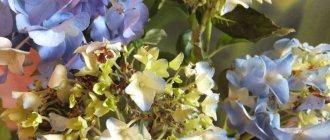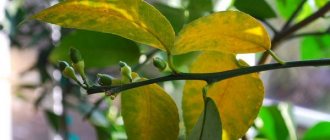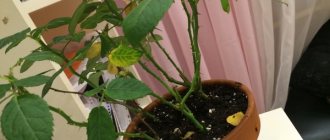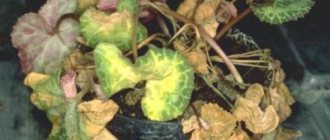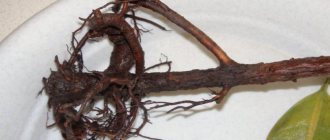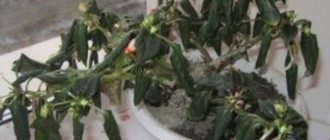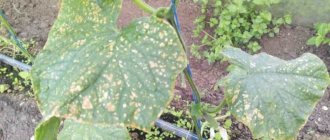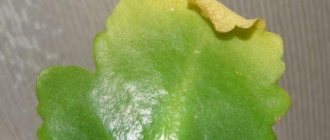Features of caring for balsam
Wet Roly begins to lose leaves as a result of:
- Freezing. In winter, window sills are often cold. Therefore, it is better to place foam under the pot. You shouldn’t keep your sissy in a cool room either.
- Lack of light. If a flower does not have enough sun, first its branches stretch out, and then the balsam sheds its foliage. We urgently need to move the pot to a brighter window.
- Underfilled. It is not for nothing that the plant is called “wet”, because its attitude to water is the most demanding. The substrate must not be allowed to dry out completely, otherwise the bush will disappear. To quickly resuscitate dried balsam, it is better to place it in a bowl of water and then drain the remainder from the tray.
In order to eliminate balsam diseases and their treatment was successful, it is necessary to ensure proper care of the plant. It is recommended to keep flower pots on window sills on the south or east side of the room
It is important to provide the flowerpot with good lighting, but without direct sunlight on the leaves.
Rules for caring for Vanka wet:
- The plant needs to be watered abundantly and regularly. If there is a lack of liquid, the balsam leaves will begin to wither. To prevent diseases associated with waterlogging of the soil, it is recommended to make a high-quality drainage layer at the bottom of the pot.
- In winter, you need to water the flower less. It is moved to a cool room with an air temperature no higher than 15 degrees Celsius.
- Leaves need to be sprayed regularly. But in such a way that water does not get on the flowers themselves.
- In spring, young shoots are pinched and old branches are removed. This procedure will make the flower more branched.
- From the beginning of spring until the onset of November, balsam needs feeding. Fertilizers are applied once every three weeks. When growing green mass, the flower is fertilized with nitrogen-containing fertilizers, and during flowering - with phosphorus or potassium preparations.
The plant is replanted every spring. For this procedure, high-quality soil is used: sand is mixed with humus and turf in equal proportions.
What are the reasons for yellowing, why do they fall off and wither?
The buds of impatiens fall off due to the following reasons:
- attacks by ticks, thrips and other pests;
- irregular watering;
- too dry air;
- incorrectly selected soil.
The plant does not like drafts - it is best to grow the light at an air temperature in the room of 15 - 25 degrees Celsius.
Excess moisture
Although impatiens like moisture, it is important to ensure that the soil is not too wet. Otherwise, excess moisture will lead to rotting of the roots and their further death. If it happens that the soil is over-watered and the balsam gets sick, urgently replant it and change the soil.
Potassium deficiency
Impatiens can reject buds due to a lack of potassium. To correct the situation, it is recommended to sprinkle the plant’s soil with a teaspoon of wood ash every week before watering. Instead of ash, it is allowed to use special preparations, for example, potassium humate.
If pests (for example, thrips) are found on the plant, the soil in the pot must be treated with an insecticide. The affected plant itself is treated with phytoverm.
To protect the plant from attack by pests and diseases, it is recommended to treat it with silicate. This preparation will additionally strengthen the balsam skeleton.
Impatiens does not like to be turned. It cannot be twisted in different directions or moved from one room to another. With slight movement, the plant begins to feel unwell, as a result of which the buds and leaves fall off.
If you do not feed the flower correctly, it will not be able to produce buds for flowering. An excess of certain substances or a lack of them often leads to the death of the plant. Therefore, it is important to choose the right complex of fertilizers for impatiens and use it in a timely manner according to the instructions.
21 days after the end of the flowering period, balsam can be fertilized using a special fertilizer intended for flowering plants. It should be selected together with a specialist in a specialized store.
There are varieties of balsam that, without long-term transplantation, simply lose their strength and cannot produce buds. Or if buds appear, they are not able to bloom and fall off after a while.
If you choose the wrong soil for planting balsam, it will be depressed and begin to drop buds and leaves.
The soil should have slightly acidic acidity. Possible soil composition options for planting balsam:
- mix turf soil in equal proportions with humus, compost and perlite;
- dilute two parts of leaf soil with a mixture of sand and peat, taken one part at a time.
It is best to plant impatiens in loose, light and moderately nutritious soil. You should not overdo it with the nutritional value of the soil. Since in this case, the plant will simply begin to grow a green top. If the soil is too loose, the flower will grow unsteadily.
The reason for yellowing of the leaves of “Vanka wet” may be:
Low air humidity. Especially at the height of the heating season or in the summer heat.- Incorrect watering. Impatiens will not tolerate either overdrying of the soil or stagnation of moisture in the pot.
- Lack of timely replanting and fertilization.
- Sunburn. When balsam leaves are exposed to direct sunlight for a long time, they begin to dry out, turn yellow and fall off (read about why balsam leaves fall and get sick and how to save a flower here).
- The appearance of pests. If all maintenance conditions are met correctly, and the foliage still turns yellow, you should carefully check the plant for the presence of pests (spider mites, aphids, thrips, whiteflies).
- Impatiens diseases (gray rot or powdery mildew).
Attention! You should not replant balsam into a pot that is too spacious, as the roots of the plant will not be able to completely absorb the moisture coming from watering and will rot.
How to propagate and transplant balsam
Spring is considered a suitable time for replanting Balsam, but you can change the pot in the summer, depending on the degree of development of the root system.
The first time after transplantation, it is advisable to water the flower moderately and keep it in the shade. Feeding should begin no earlier than 2 weeks after the procedure.
Vanka wet is propagated by cuttings and grown from seeds.
To grow Vanka wet, you need to take light soil with low acidity. At the same time, it should not be too loose to ensure stability for the bushy plant. The following compositions can be recommended:
- Leaf soil - 2 parts, peat - 1 part, coarse sand - 1 part;
- Leaf soil - 1 part, turf soil - 2 parts, humus 1 part, peat - 1 part, sand - 1 part;
- Turf soil - 2 parts, humus - 1 part, peat - 1 part, sand - 0.5 parts;
- Turf soil, humus, compost, perlite in equal quantities.
Indoor balsam seeds can be purchased at a flower shop, or you can also get them yourself. To do this, you need to very carefully cut off the dried seed pods that form after flowering ends. Wet Vanka seeds remain viable for six to eight years after collection.
https://www.youtube.com/watch?v=videoseries
It is best to plant balsam seeds in early spring. To do this, you need to prepare a planting container, which is filled with a substrate with a large amount of peat.
To grow balsam from seeds, you need to evenly distribute the planting material over the surface and cover it with a layer of soil half a centimeter high.
The emergence of seedlings when growing balsam from seeds usually occurs within a week. You can see what the seedlings look like in the photo. During this period, the cover is removed. After a month, several true leaves form on the sprouts, at which time the seedlings can be planted in individual pots. Flowering occurs on average after four months.
In order to propagate balsam using this method, in spring or summer you need to cut cuttings from five to seven centimeters long, each of them must have at least two internodes. The leaves at the bottom and buds are removed.
The prepared stems can be placed in a container with water until roots are formed, or they can be immediately planted in the ground. To do this, you need to take peat, perlite and vermiculite in equal parts and place the cuttings there, slightly compacting the soil around them. The soil needs to be moistened and then covered with a plastic bag.
If the cuttings are kept in a bright and warm room, then after half a month they will take root, and after another three months they will bloom.
The roots are cleared of the substrate, and dried and rotten parts are removed with a sharp and clean knife. The cut sites are treated with charcoal, and the plant is placed in new soil. After this, Vanka is watered wet and goes to a shady place for a week. After the plant has taken root, it is placed in a permanent place of growth and taken care of as usual.
Balsam is one of the most picky indoor plants that does not require special conditions. Therefore, he just needs to pay a small amount of attention, for which he will delight all year round with his bright and original flowering.
Vanka wet is a fast-growing flower with a powerful root system. It needs annual transplants. It tolerates interference with the root system well. It is better to perform the procedure in the spring, before pruning. The bush grows quickly, so when it reaches 2-3 years of age, it is thrown away and a replacement is grown from cuttings.
Impatiens blooms profusely only when the roots have completely entwined the earthen ball. Therefore, the pot is selected so that there is 4-7 cm left from the trunk to the sides. Wet Vanka feels better in deep containers. The soil for growing should be light and nutritious. A mixture of leaf soil, sand and peat (3:1:2) works well.
Replanting Balsam is simple:
- the bush is removed from the old pot;
- the roots are partially freed from the soil;
- damaged areas, if any, are removed;
- drainage and fresh soil are poured into the new pot;
- make a hole in the ground, spill water on it;
- install the plant so that the trunk does not have to be buried;
- fill up the soil;
- watered.
What to do and how to restore the flora?
Help for yellowing balsam is provided based on the identified cause.
If the plant suffers from dry air, it must be moved away from heating devices and regularly sprayed with clean, settled water.
Watering problems
If the earthen ball with roots has been overdried, it is necessary to place the pot with the plant in a container with warm, well-settled water and leave there for 30-40 minutes. Watered in this way, “Vanka wet” can be placed under a bag for 12 hours for more effective restoration.
If the plant has been overwatered, you should remove it from the pot along with the earthen lump and carefully examine the roots for the presence of rot.
- If rotting of the root system is detected, it must be carefully cleared of soil and all affected areas must be removed with sharp scissors or a knife.
- After the procedure, you should replant the balsam into fresh soil, after washing and scalding the old pot with boiling water or replacing it with a new one.
For better survival of the root system, it is recommended to treat it with a specialized composition to stimulate growth (for example, “Kornevin”).
If the cause of yellowing of the foliage is “poor” soil, it is recommended to feed the balsam with a specialized fertilizer. Both complexes for flowering indoor plants and compositions specially designed for balsam plants are suitable.
If the plant is cramped in an old pot, it should be transferred to a larger container, no more than 1.2 times the volume of the previous one.
Important: the pot chosen for replanting should not be too high, since the roots of balsam grow wider than deep.
It is categorically not recommended to completely remove old soil: this can cause serious stress to the plant’s root system. You should lightly shake the flower to clear it of excess soil, and during the replanting process, add the required amount of fresh soil to the pot.
Sunburn
It will no longer be possible to cure leaves burned by direct rays of the sun, so they should be removed, thereby making it easier for the surviving parts of the plant to feed. To avoid the appearance of new burns, the balsam must be moved to the western or eastern window. If moving the plant is not possible, it should be shaded during the midday hours.
We suggest you familiarize yourself with: Green tea with herbs
Diseases and pests of Balsam
If you carefully read our article about caring for Balsam, most likely your pet will not get sick. But it’s not always possible to take perfect care of your flower, because summer has come - it’s time for vacations.
What should you do if you were away from home for a long time, and upon arrival you discovered that your Balsam was sick? Read the next article, in which we will talk about how to deal with diseases and pests of indoor Balsam.
Balsam's diseases
Impatiens, if they are well cared for, do not get sick more often than other indoor plants. But gross violations of the conditions of keeping the flower can lead to dire consequences.
Root rot
If moisture often stagnates in the soil, this can lead to diseases of the root system - the so-called Root Rot. At the first signs of disease, the plant can still be saved. Remove damaged roots and replant the plant in new soil with good drainage.
Bronzing
Bronzing is another untreatable disease of Balsam. The disease is recognized by wilting leaves and stems, deformation of the leaves, and the formation of holes of different sizes on them. The diseased plant should be destroyed.
Mosaic
Insect pests are sometimes carriers of diseases such as Mosaic. The leaves become deformed, yellow spots appear on them, the stem begins to wither, and flower growth stops.
It is necessary to get rid of parasites on the plant with the help of insecticides, and then try to bring the flower to its normal appearance by pruning the affected areas, replanting it in new soil and careful care.
Sometimes it is not possible to save a flower.
We have described almost all the diseases that indoor Balsam can suffer from. At the first signs of illness, begin treatment and take measures to prevent the disease from spreading to other flowers.
Other growing problems
But, if Balsam is grown incorrectly, other problems of a non-infectious nature also occur. Let's consider them too.
If the Balsam suddenly began to shed its leaves, turn yellow and wither, then this is the first sign that it was stressed: there was a sharp fluctuation in temperature, or the lighting changed for the worse, or the flower was forgotten to be removed from a cold draft when ventilating the room, or it became cramped in the room. tiny pot. Analyze all options and correct errors immediately.
This may be interesting: Caring for Clivia at home
With a lack of light and heat, Balsam leaves will curl and fall off. The plant will not bloom. Eliminate the deficiencies in care, and the Balsam will grow new leaves. Similar symptoms occur if an old pot becomes too small for Balsam - it grows out of it. The plant should be transplanted into a suitable container.
There are two options: transplant the bush into a smaller pot or plant a couple of cuttings in this pot, perhaps of a different variety, with a different color of flowers. The root system will master the earthen ball, and flowering will begin faster. When fertilizing, make sure that the fertilizer contains nitrogen in small quantities. It is preferable to use fertilizers high in potassium and phosphorus.
At high temperatures and low humidity, the leaves of the plant droop and flowering becomes sluggish. Adjust the humidity and temperature indicators - and the flower will return to its original blooming appearance.
If Balsam's buds and flowers fall off, then the room temperature is most likely low or the air is too dry. Or maybe you are not watering “Wet Vanka” enough. Poor lighting of his place of residence and an excess of fertilizers in the soil can also lead to this problem.
The decorative effect of the flower will suffer. Place the pot closer to the light source, rotate it around its axis - then the bush will develop proportionally, the color of the leaves and flowers will become intense and bright.
If Balsam's leaves turn yellow in summer, it is due to sunburn. This can often be observed if a young flower is standing in direct sunlight. In winter, the leaves turn yellow due to too low room temperatures.
This may be interesting: Methods for propagating Violets (Saintpaulium)
Conclusion
Impatiens is an unusually beautiful indoor plant. It can live in your home for a long time and delight you with extraordinary flowering. You just need to rejuvenate it in time, replant it, propagate it and, of course, treat it when it gets sick. We are confident that you will succeed, and your Light will always look very impressive and will become the main decoration of your home.
What causes this disease?
Causes
There are many reasons associated with yellowing of balsam leaves. Below they will be listed in descending order, that is, from the most common to the least common.
- Pests. The most common pest that can cause leaves to turn yellow is spider mites (read about how to deal with spider mites on balsam here). The main problem is its “corrosiveness”, that is, it is very difficult to remove. This is due to the rapid spread of its larvae, which in the state of the larvae themselves are very resistant to all kinds of means.
When trying to destroy this pest, it is necessary to treat the plant at least 3-4 times a week.
- Air humidity. The problem is due to the fact that most gardeners place balsam on the windowsill, and under it there may be radiators, heaters, and so on. All these heating devices dry the air, which is very critical for a moisture-loving plant.
- Incorrect watering. Here it’s worth starting with the fact that drying of the leaves can be associated with both insufficient watering and its excess. Therefore, the correct amount of water for irrigation for each flower is supported by experience.
- Old soil. When left in the same soil for a long time, balsam absorbs all the minerals from the soil.
This begins to lead to soil depletion and an increase in acid levels. Transplantation should be carried out in mid-spring and late summer.
Popular varieties of balsam
Many varieties of Impatiens are bred on the basis of Waller's, garden or New Guinea balsam. They differ in color, size and shape of flowers, as well as the height of the bush.
Garden Tom Thumb
This low balsam bush (25 centimeters) is planted in city flower beds and garden plots. The plant has oblong lanceolate leaves, double flowers of various shades (pink, scarlet, lilac, snow-white). Tom Thumb is an annual that blooms all summer.
Camellia
A tall and heavily branched plant. Can stretch up to 61 centimeters in height. The Camellia variety blooms profusely and for a long time. The flowers are double, pale pink or purple. An annual used to decorate flower beds.
Waller
Impatiens Wallera is a popular indoor and garden crop. Height - 26-40 centimeters. The bush has a spherical shape, succulent, highly branched stems. Flowers can be simple or double, of different colors. Impatiens blooms for almost 90 days. The variety is often used to breed new hybrids.
Exotic dwarf
A small plant often used to decorate balconies. The height of the Impatiens is only 20 centimeters. Leaves are lanceolate, serrate. Flowers can be purple, pink, bright red.
Harmony
A beautiful, compact plant obtained from New Guinea balsam. Forms a lush bush, strewn with large round flowers on top. This heat-loving plant is usually grown in indoor pots.
Java
Long-blooming Impatiens, bred on the basis of New Guinea balsam. This plant has bright, exotic-looking flowers blooming against a background of shiny greenish or bronze leaves.
Mini Jini
Series related to New Guinea hybrids. Impatiens have small dark green leaves and numerous small flowers that cover the bush almost all year round.
Macarena
Balsam from the group of New Guinea hybrids. Impatiens has bright, luminescent orange flowers and bronze-green leaves.
Camelia Flowered
Tall plant. The variety was bred on the basis of garden balsam. It has a tall pyramidal stem, oblong leaves, and pink or lilac flowers.
Peppermint
An erect pyramidal plant, 40-45 centimeters high. The flowers are camellia-shaped, large, double, and can be scarlet, pink, plain or white speckled. The annual blooms in gardens from June to September.
Baby bush
Low growing garden plant. An annual plant reaching 25 centimeters in height. It blooms for a long time with large rose-like flowers.
Tom Thumb
Dwarf garden variety. An annual that blooms all summer. The flowers are double and can be snow-white, pink, scarlet, or lilac.
Scarlett
Garden crop, 26-40 centimeters high. Abundantly covered with flowers from June to September. The color of the petals is bright red.
Sultan-shaped
Indoor culture 31-61 centimeters high. The leaves are green, with serrated edges. The flowers are shaped like an orchid, arranged one at a time on a long stalk, have a spur, and are white, reddish, or pale pink. In an apartment, Impatiens can bloom throughout the year, the flowers replace each other, each blooms for about 2 weeks.
New Guinea
Most often grown as an indoor perennial. The plant is tall but compact. Grows up to 30-45 centimeters in height. Characterized by abundant and long-lasting flowering. Requires long daylight hours and high temperatures. It has large double flowers, mostly pinkish and scarlet.
Terry
Indoor plant with dark green shiny leaves and large double flowers. Impatiens blooms almost all year round. Flower petals can be pink, scarlet, snow-white, plain or variegated.
Why Vanka is wet and drops future flowers - all sorts of reasons
Openwork balsam leaves have a fleshy consistency due to the water stored in them. With a sharp increase in atmospheric humidity, the plant secretes droplets similar to sugary syrup, located on the veins of the foliage. This process is called guttation and occurs due to the work of special stomata present in the leaf structure and called hydathodes.
There may be several reasons why flowers wither and fall off:
- Soil too wet. This provokes rotting and death of the roots. In this case, the plant does not receive nutrients from the soil and drops flowers.
- Lack of potassium. Potassium is necessary for good flowering; if the soil is poor, the plant does not have enough strength to flower (this article explains why balsam does not bloom).
- Pests often cause flowers to drop. They suck out plant juices and thereby cause various diseases. After which an infection often occurs.
- Incorrect fertilizing, namely excess nitrogen in the soil. Nitrogen promotes crown development and inhibits flowering.
- Anxiety. Impatiens do not like being moved, turned, or transferred from one room to another. This causes stress and causes the colors to drop.
- Transplantation during flowering. This is strictly prohibited, as the plant is subjected to severe stress and stress.
- Inappropriate soil. The soil for balsam should be slightly acidic, light and loose. This is the only way the plant can fully absorb all nutrients. Otherwise, the flower feels uncomfortable.
We suggest you familiarize yourself with: Farmazin, what
causes the following reasons for the fall of balsam buds:
- lack of potassium in the soil to support a long flowering period of impatiens;
- cold air flow;
- negative reaction to displacement;
- improperly selected soil;
- poor quality watering;
- presence of pests and parasites;
- too dry air;
- finding the plant near drafts;
- poor feeding;
- inappropriate time for transplantation;
- excess nitrogen;
- drying out of the earthen coma;
- the effect of direct sunlight on the plant;
- tobacco smoke;
Reference! Purchased balsam always sheds buds during a two-week acclimatization period in new conditions.
Balsam leaves are soft green, lance-shaped, with jagged edges. With good care, they reach a length of up to 12 centimeters. The leaves contain a large supply of nutrients, which is why they are so fleshy. They also have very high sensitivity. It is by them that almost all plant diseases can be identified.
Vanka wet has a peculiarity - before the rain, drops of juice form on its leaves and branches, and as they evaporate, they crystallize. Because of this, it is called a home rain predictor.
Popular types and varieties
According to various sources, the number of balsam genus ranges from 400 to 550 species. The most common traditional varieties are spreading bushes with red and white flowers.
Gradually, they began to be replaced by new hybrid varieties - they are distinguished by more compact, dense bushes, abundant flowering, and new colors. Variegated (variegated) forms of the plant belong mainly to New Guinea hybrids. The most common are four varieties.
- Waller's balsam. The form includes several different hybrid varieties with similar characteristics. The height of the bush is up to half a meter or slightly higher. The stems are bare, highly branched, thick. Thin leaves are held on long petioles. The flowers are separate, large, located at the ends of the shoots. The coloring is different. There are terry forms.
- Peters' balsam. Quite a tall, bushy plant. Stems slightly pubescent. The color of the ground part has a bronze tint. Flowers are fiery in color, on long stalks.
- Niamey balsam. Bush up to a meter tall, with long, branched stems. The leaves are oblong, densely located on the stem. Buds on long stalks are formed in the leaf axils. The flowers are predominantly red. There are two-color varieties with an admixture of yellow splashes.
- New Guinea balsam. Includes a group of tall and compact perennials. The flowers are of different shades, the leaves are quite large.
Wet vanilla (balsam) will bloom more profusely if you regularly pinch the shoots. Due to this, branching increases and more buds are laid. Dwarf varieties of balsam do not need to be pinched.
If all else fails
Impatiens is a whimsical plant, so you shouldn’t neglect its condition by postponing “reanimation” until the last moment.
If the plant has turned yellow and is dropping all or almost all of its leaves and none of the measures suggested above helped, you need to:
- Remove all dead areas from it (including rotten or dried roots).
- Spray the above-ground part with a growth stimulator and place the pot in a greenhouse, ensuring regular ventilation.
If these actions do not give positive results, the plant can be safely thrown away. All gardeners learn from mistakes and, having figured out the intricacies of growing “Vanka wet” using this sad example, you will certainly cope with its newly acquired relative.
Tags: roly, wet, fall, why, flower
About the author: admin4ik
« Previous entry
Prevention
To avoid balsam diseases, it is necessary to provide proper care. Adhere to the rules of watering and temperature conditions. Fertilize and treat the leaves with a soap solution, followed by washing the plant in the shower.
Temperature
Balsam loves warmth and is painfully tolerant of cold. In summer, it tolerates temperatures well from 20 °C to 28 °C. In winter, the temperature in the room where she is on vacation should not be lower than 16 °.
Light level
Vanka is a wet photophilous. In summer it needs to be protected from the sun by moving the pot to partial shade.
With a lack of sunlight you can observe:
- strong stretching of the trunk and side shoots;
- a small number of buds;
- slow growth of leaves and their pallor.
Doesn't like being cramped on the windowsill or being close to other flowers.
Top dressing
Fertilizing is applied in spring and summer, once every 14 days. Complex mineral fertilizers are suitable. Organic fertilizers are not applied; because of them, Vanka’s foliage grows excessively. After replanting, the plant is fed only after three weeks.
Watering rules
There are several rules for watering a plant:
- Water frequently, but in small portions. Excess water that flows into the pan must be drained so that it does not stagnate and the roots do not rot.
- There should be drainage at the bottom of the pan.
- Water in a small stream along the edges of the pot so as not to flood the neck of the root.
- After watering, the soil needs to be loosened a little.
These simple rules will help you avoid flooding the plant and causing the roots to rot.
Transplant timing
A young flower needs to be replanted every year. As the roots grow, it requires a larger diameter pot. Balsam likes its roots to be freely located in the pot. This procedure is carried out in summer and spring.
Vanka wet is an unpretentious and very beautiful perennial. Its luxurious inflorescences will not leave any gardener indifferent. And if you take it out onto the terrace or balcony, you can observe vigorous flowering all summer long.
In practice, absolutely any gardener can encounter yellowing of balsam leaves. This problem may have completely different reasons. For example, the cause of yellowing may be improper watering, or various pests.
Many people cannot distinguish between yellowing of leaves due to improper care and natural shedding of leaves. Therefore, below we will tell you how to determine why balsam leaves turn yellow and fall off, what to do and how to treat them, as well as methods of control and prevention.
Causes of leaves falling off in wet vanya (balsam) and ways to solve the problem
There is probably not a single gardener who does not like the delicate, handsome balsam. A lush bush with rich green foliage is amazingly beautiful in itself, but when delicate inflorescences begin to open on it every day, and this continues for quite a long time, you simply cannot take your eyes off the flower. But it’s not for nothing that they believe that balsam has a hot-tempered character, to put it mildly. I almost forgot to water the plant, and now the crown has disintegrated, the leaves have drooped like rags, or even the leaves have completely fallen. Why does this happen and how not to lose your pet?
Preventive measures
The main consequences of balsam buds falling off are:
- The emergence of various types of parasites.
- Poor care and maintenance conditions can lead to a variety of diseases and death of the plant.
- If a flower is kept at a low temperature and at the same time oversaturation of moisture, then its buds may gradually begin to turn yellow and fall off, and a gray fluffy coating may also appear. This plaque is called gray rot.
- Under the balsam conditions indicated above, but at a higher temperature, the leaves will simply droop. In this case, you need to lower the temperature.
- If there is an excessive amount of water due to bottom watering, the roots of the plant may begin to rot.
- Buds and flowers may fall off due to dry air and high temperatures.
- In the case of a small amount of incoming light and a lack of necessary nutrients, the stems of balsam may begin to stretch, and the flowers, on the contrary, become dry and small.
- At low temperatures and at the same time an excess of moisture, the leaves may turn yellow and fall off, a gray fluffy coating may appear (read about why balsam leaves fall off and how to help the plant, and from this article you will learn why the leaves of an indoor flower turn yellow ). This type of plaque is called “Grey Rot”.
- Under the same conditions, but with increased temperature, the leaves will simply droop. Simply lowering the temperature will help.
- If there is excess moisture due to tray irrigation, the root system may begin to rot.
- Buds and flowers may fall off due to dry air and high temperatures.
- In the absence of nutrients and lack of light, the stems begin to stretch, and the flowers, on the contrary, become small and dry.
ATTENTION
: For all these above reasons
diseases
The following problems may occur: petals fly away, leaves turn pink and become covered with spots, lack of flowering, the number of flowering buds becomes smaller, and so on.
Read about why indoor balsam does not bloom, but only leaves grow, here.
Basic preventive measures include normalizing temperature, soil moisture, dry air and normalizing soil acidity. In addition, when pests appear, it is worth using insecticides.
Feeding can help, the main thing is not to overdo it, because you can make it even worse. Avoid sudden changes in temperature, and do not turn an already flowering plant. In winter, you should not place it near a north window.
In conclusion, I would like to say that balsam, despite the difficulties with caring for the buds, is a very beautiful and useful plant that will appeal to both beginning gardeners and experienced gardeners.
Main causes and solutions
The causes of yellowing and falling leaves can be:
- direct sunlight on the foliage;
- tobacco smoke;
- insufficient lighting;
- lack of moisture;
- low room temperature;
- dry air;
- pests
All these reasons are a consequence of improper plant care. Once favorable conditions and proper care are created, the problem will disappear.
Humidity
Impatiens do not need high humidity. It should be within 60%. It’s another matter if the room is hot and dry, and the flower sheds its leaves. The cause may be a heater located nearby, or a radiator above which a plant stands on the windowsill.
Causes leading to balsam diseases
The home flower balsam is a moisture-loving plant. The stems and leaves are half made of water, so Vanka wet needs high air humidity and moist soil. Water is not only a source of life for plants and people, but also for pathogenic bacteria and pests.
It is recommended to water the flowerpot with clean and warm water. The pot in which the flower grows must have a drainage hole and a drainage layer. The earth mixture should be loose, moisture- and breathable. To disinfect the soil, it is recommended to add charcoal to it. This substance will prevent the appearance of putrefactive bacteria and fungi.
If you properly care for the plant, it will grow strong, and diseases and pests can be easily destroyed with special means.
Impatiens diseases
If the leaves of the impatiens begin to fall off, and the buds disappear without opening, the following situations may be the reasons for this condition:
perhaps the flower is simply undergoing adaptation to a new place after purchase. The adaptation period can last for a month
It is important to properly care for balsam: water it, feed it, spray it in a timely manner. Proper care will help the plant acquire beautiful stems and new leaves; leaves may fall off due to dry soil
The earthen mixture cracks and lags behind the edges of the pot. Dry soil leads to yellowing, drying, and curling of leaves. It is recommended to water the flower once every seven days; Balsam leaves fall off when the soil is too moist. This is evidenced by the moist layer of soil on the second day after watering. If the plant does not have time to dry the soil in a week, it should be transplanted into a container of smaller diameter; if the leaves of the plant are covered with a white coating, and they gradually begin to wither and fall off, it means that the balsam has suffered from an attack by a spider mite. It is necessary to take all measures to remove it; if the balsam leaves wither only on one side, the watering procedure should be normalized, since the soil is too moist.
Wet Vanka leaves may wilt and become covered with round brown spots due to the soil being too wet. It is recommended to water the flower moderately by adding Fitosporin-M to the water.
The appearance of gray rot
Brown spots appear on the leaves and stems of balsam. This fungal disease is called gray rot. If you do not help the plant in time, it will disappear.
Pathogenic bacteria enter the flower along with water or contaminated soil. The disease can occur due to hypothermia or freezing of the roots of the flower. Drafts, cold water, low air temperature in the room can also lead to the appearance and proliferation of rot.
Gray rot must be removed immediately at the first symptoms of its manifestation. Cut off the affected parts of the flower, and transplant healthy parts into a new pot. You can spray the plant with garlic infusion or foundation.
Development of bacteriosis
Watery spots can be seen on balsam, which indicate the development of bacteriosis. With this disease, the spots quickly increase in size, become brown in color, and soon lead to the death of the flower.
Impatiens can become infected with bacteriosis through contaminated soil, dirty tools or dirty hands. The disease often occurs due to excess moisture, as well as fertilizers in the soil, and polluted air.
If damaged leaves are found, they must be removed immediately to save healthy parts of the plant. The flower is additionally sprayed with a preparation that contains copper.
The appearance of powdery mildew
Balsam leaves may become covered with a white coating, which is caused by powdery mildew. Diseased foliage should be urgently destroyed, and healthy foliage should be treated with soda ash diluted in a liter of water or a copper-soap solution.
If powdery mildew occurs frequently on balsams, you need to change the rules for caring for them. It is recommended to frequently ventilate the room, properly water and feed the flower, and grow it in a well-lit and warm room.
Common ailments, their treatment and photos
Gray rot
This is a fungal disease. It is characterized by the appearance of brown spots on stems and leaves. If measures are not taken in time, the flower will die.
We suggest you read: Why violet leaves turn yellow
Causes:
- hypothermia;
- watering with cold water;
- drafts;
- low air temperature;
- soil contamination with spores of pathogenic fungi.
Treatment:
- The affected parts of the plant are cut off with a sterile instrument to healthy tissue.
- The healthy part is sprayed with Fundazol from a spray bottle. Fundazol is a systemic fungicide with a broad spectrum of action. Preparation of the solution: dilute 1 g of powder with 1 liter of water, stir until completely dissolved. Spraying is carried out carefully; all above-ground parts of the plant must be treated.
- The indoor flower is transplanted into a pot with new soil. Before planting, the soil is also sprayed with a solution of Fundazol. The drug is diluted in the same proportion. Once in the soil, the fungicide prevents the development of pathogenic fungi.
Before the procedure, the instrument (scissors or pruning shears) should be kept in medical alcohol, and the sections should be sprinkled with charcoal powder or cinnamon.
Bacteriosis
It appears as watery spots that quickly enlarge and acquire a brown tint.
Causes:
- contaminated soil;
- dirty tools;
- excess moisture or fertilizer.
Treatment:
- Pruning diseased parts of the plant.
- Spraying with copper oxychloride (CHOM). This is a fungicidal preparation with protective contact action. The solution is prepared in the following proportion: 4 g of powder per 10 liters of water. Then carefully spray the plant from all sides with a spray bottle.
- After 14 days, the procedure is repeated.
- The soil should also be sprayed with the same solution.
Powdery mildew
The disease is characterized by the appearance of a white coating on all parts of the plant, curling and drying of the leaves.
Causes:
- improper watering;
- air stagnation;
- low temperature;
- bad light.
Treatment:
- Removing diseased parts of the plant.
- Spraying with soda ash solution. To do this, dissolve 1 tablespoon of soda in 5 liters of water, add 2 tablespoons of liquid soap. Thoroughly spray the plant with this solution using a spray bottle.
- The procedure is repeated after 10 days.
- As an alternative, you can use a copper-soap solution. To do this: 5 g of copper sulfate is dissolved in 250 ml of hot water. Separately prepare a soap solution: 50g of soap is grated and dissolved in 5 liters of warm water. Then a solution with vitriol is poured into it. The plant is sprayed with this emulsion from a spray bottle.
It is characterized by the appearance of spots on the leaves, followed by their drying out and falling off. Flowers and buds also fall off.
The disease is viral in origin and is fatal to balsam. The mosaic virus is spread by thrips (parasitic insects) and cannot be treated.
The diseased plant should be destroyed and the soil should be thrown out of the pot.
Features of care
Vanka Mokryi is a non-capricious plant. It does not require any special care, just a minimum of attention. The main thing is to provide the Impatiens with regular watering and timely application of fertilizers.
Watering
You need to water the Impatiens regularly, making sure that the soil does not dry out. Impatiens immediately react to a lack of moisture - its leaves curl and its flowers droop. If there is insufficient watering, the plant may drop flowers and buds.
Spraying
It is advisable to irrigate the balsam with cold water every other day. This procedure will protect the plant from spider mites and saturate the Impatiens with moisture.
Pinching and trimming
You need to not only care for the balsam, but also pinch it correctly. When the plant grows a little, it is advisable to shorten its top. The balsam will no longer stretch upward, but will begin to form side shoots. The plant will take the shape of a spherical, compact bush. True, for this you need to constantly cut off stems that are too elongated.
Top dressing
For abundant flowering, Impatiens needs to be fed 1-2 times a month with complex fertilizers for flowering plants.
Hardening
Usually, Impatiens sown as seedlings are hardened off before being transplanted outside. The room where the seedlings grow is regularly ventilated. In May, in warm weather, boxes with seedlings are placed in sunlight for several hours.
Wintering
In autumn, yellowed and fading garden balsam is cut off, the roots are dug up and removed from the flowerbed. It will not be possible to preserve the bush in winter. When frost sets in, it will quickly die. A new plant is sown the next season.
Trimming
Impatiens need to be pruned in spring or early summer so that the plant takes the form of a compact, low bush. Usually the top of the stem, 30-40 centimeters long, is pinched off. Impatiens begin to actively form side shoots.
How to reanimate a plant to save it?
What to do if the flower has withered, drooped and darkened at the base and is slowly dying? If the flower dies, urgently do the following:
- Find out the reason.
- Adjust air and soil humidity.
- Trim the affected areas back to healthy tissue.
- Eliminate drafts.
- Avoid exposure to sunlight.
- Spray the flower with fungicide. It is best to use the broad-spectrum drug Discor. To do this, dissolve 1 ml of the drug in 2 liters of water. Spray the plant with the resulting solution from a spray bottle. Repeat procedures after 10–12 days.
Discor is a highly effective chemical fungicide of contact and systemic action. Covers a wide range of diseases. Often used in cases where the plant disease is uncertain.
If the roots are damaged:
- Remove the flower from the pot and carefully free the root from any lumps of soil.
- Rinse the root under running water.
- If there are damaged areas on the root, prune them.
- Prepare a Kornevin solution at the rate of 1 g of powder per 1 liter of water.
- Place the plant there so that only the roots are immersed in the solution.
- After a day, replace the solution with water, place the flower there and leave there until young roots begin to grow.
- After this, the balsam can be transplanted into new soil.
Corevin is a chlorine-free biostimulating drug that promotes the development and restoration of the root system.
Common types and varieties of indoor balsam
Today, about six hundred varieties of the plant are known; they have the most varied shapes and colors of flowers and foliage, as well as structure, but they all have common features. Impatiens can be erect, bush or hanging. They have both tall and dwarf forms.
New Guinea balsam (New Guinea balsam)
As you can see in the photo, New Guinea varieties of balsam stand out among other types due to their larger flowers (reaching eighty millimeters in diameter), which bloom all year round. They can be white, all shades of red, purple and pink.
The foliage has a lanceolate shape, short petioles and a rich bronze, bright green color. Often the leaf blade has a yellow center. Their length can reach ten centimeters and a width of five centimeters. Compact bushes grow up to half a meter. These are very hardy hybrid plants.
Waller's balsam (Waller's balsam)
Waller's balsam is the original form of many hybrid varieties. These include the sultan or sultan-shaped balsam, which has a branching transparent stem with dark green leaves. Flowers can be crimson, red and white.
Holsta's balsam also belongs to the Waller varietal variety. Its bush, shown in the photo, has a spherical shape with smooth, branched stems of a reddish hue. They bear lanceolate-shaped foliage with jagged edges and fleshy green petioles, about six centimeters in length.
Flowering occurs throughout the year. The flowers reach four centimeters in diameter, are odorless, and their colors can be red, pink and white.
Waller's balsam varieties grow up to sixty centimeters in height. Their flowers can be either simple or double. This type of plant is the most popular in indoor cultivation, and breeders are constantly developing new varieties.
Orchid balsam
Orchid balsam is not only a beautiful flowering plant, but also an ornamental foliage plant with a dark pink brittle stem. Its velvety, dark green foliage is streaked with pink or red. The original flowers look like a small white shoe with burgundy and yellow-orange spots. All this gives it a very impressive look. In addition, unlike other species, it is not afraid of spider mites.
Balsam of Niamey (Nianiam)
Niamey balsam in natural growing conditions can grow up to one meter in height. In indoor conditions, it is a compact spherical plant up to twenty centimeters tall. Its stems are smooth, succulent and fragile.
The foliage is oval or lanceolate in shape with serrated edges and reaches twelve centimeters in length. Its unusually shaped flowers, reminiscent of bean flowers, are colored in various shades of red. Abundant flowering continues throughout the year.
Peters' balsam
Peters' balsam is very similar to Waller's balsam, but it is somewhat larger and has more elongated leaf blades and petioles. Its stems are hairy and bronze in color, and its flowers are bright red. Breeders often cross these two species with each other, obtaining new, very beautiful varieties.
Description of the plant
First, let's tell you what this plant is. Impatiens is a member of the family of annual or perennial herbaceous plants of the Balsamaceae family, although some species of this plant may be subshrubs. Balsam comes from the subtropics and tropics of Africa and Asia , and certain species can also be found in Central Asia.
Since its introduction to Europe in 1596, it has been the most popular indoor plant. The plant itself has long, erect stems reaching a length of up to 50 cm and is a long-flowering plant. The stems are smooth and branched.
The leaves can be lanceolate or oval in shape, and also reach a length of 8-12 centimeters. The color of the petals in nature is red and pink, while hybrids have all colors except yellow and blue.
On a note. Popularly nicknamed “Touchy” because of the sensitive seed pods, which at the slightest touch shoot seeds up to 2 meters away.

